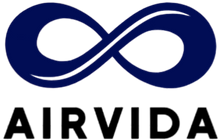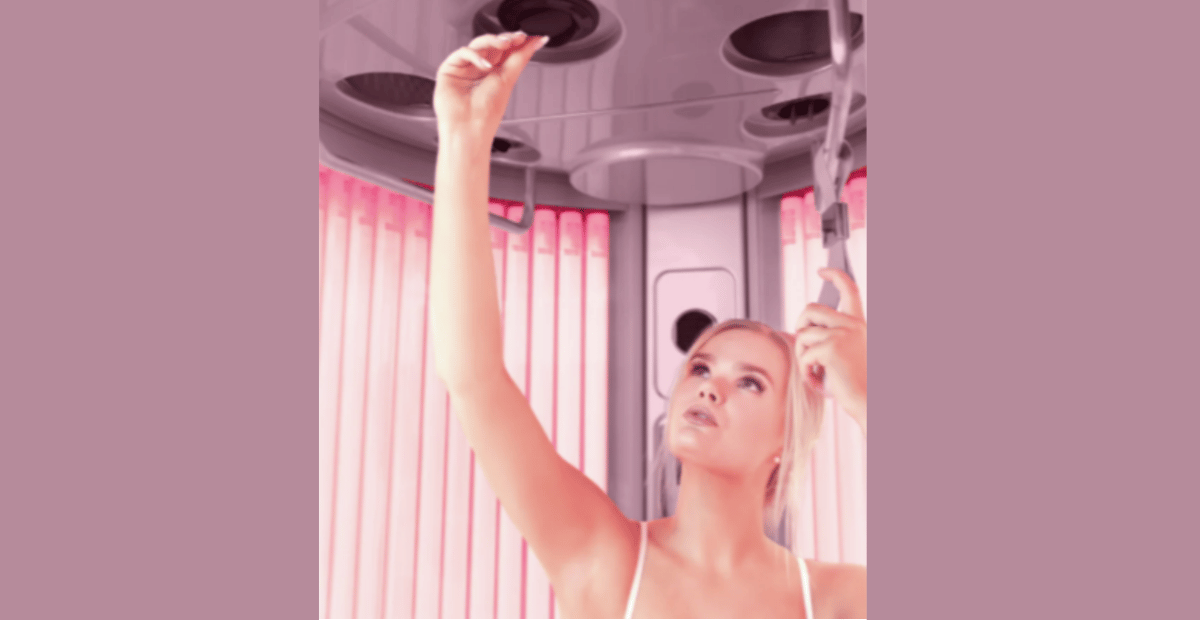Red light therapy for hair growth has gained massive attention for its potential to naturally stimulate follicles and combat hair thinning. Backed by scientific research and widely used in clinical and at-home settings, this treatment is becoming a go-to solution for those seeking healthier, fuller hair.
This article will discuss how red light therapy works, the science behind its effectiveness, what wavelengths matter most, and what to look for in a quality device. We’ll also explore potential results, safety considerations, and expert-recommended products. We invite you to read further to learn more about these topics.
Red Light Therapy: From Humble Roots to Hair Regrowth Innovation
Red light therapy (RLT), or low-level laser therapy (LLLT), originated from NASA research in the 1990s on tissue healing in space. It uses red and near-infrared light (630–850nm) to energize cells by stimulating mitochondria and boosting ATP production, enhancing cellular repair and regeneration.
When applied to the scalp, this process improves blood flow, reduces inflammation, and extends the hair’s growth phase. It can reactivate dormant follicles and strengthen existing strands. Clinically backed and non-invasive, RLT has become a safe, drug-free option for anyone looking to restore thicker, healthier hair naturally.
The Science Behind Red Light Therapy for Hair Growth
Numerous studies support red light therapy for hair growth, especially in individuals suffering from androgenetic alopecia or age-related thinning. When light in the range of 630nm to 660nm reaches the scalp, it energizes dormant hair follicles, helping to reverse miniaturization, a common feature in pattern baldness.
Research published in the Journal of Clinical and Aesthetic Dermatology showed significant hair count increases in both men and women using red light therapy for hair growth devices over a 24-week period. The therapy improved follicle thickness, hair density, and scalp circulation.
Best Wavelengths for Hair Regrowth

Wavelength is a critical factor in red light therapy’s effectiveness for hair regrowth. Scientific research highlights specific ranges that stimulate follicles, boost blood flow, and encourage cellular regeneration.
The most effective wavelengths include:
-
630nm – 660nm (Red Light): Targets surface-level hair follicles and stimulates keratinocyte activity.
-
810nm – 850nm (Near-Infrared Light): Penetrates deeper into the scalp to enhance circulation and repair tissue at the cellular level.
-
Multi-wavelength combinations: Devices that use both red and near-infrared light often provide more comprehensive results by addressing both shallow and deep follicular structures.
Many premium red light therapy devices strategically combine these ranges to optimize hair growth and scalp health outcomes.
Who Should Try Red Light Therapy for Hair Growth?
Red light therapy is suitable for a wide range of people dealing with hair loss. It’s especially beneficial for men and women experiencing pattern baldness in its early to moderate stages. Postpartum individuals often turn to red light therapy to restore lost volume and density, while those dealing with age-related or stress-induced thinning may find it helps rejuvenate weakened follicles.
It can also support recovery for individuals experiencing hair loss due to illness or side effects from medication, offering a gentle, drug-free approach to regrowth. While generally safe, it’s not recommended for those with photosensitivity disorders or active scalp infections.
Featured Devices Worth Checking Out
Looking to invest in serious red light therapy equipment? These premium devices combine cutting-edge light technology with practical design to support hair growth, skin health, and overall rejuvenation:
1. Airvida Aura Red Light Therapy Bed

Engineered for both home and commercial use, the Aura delivers targeted red and near-infrared light therapy across the entire body. It supports mitochondrial function, circulation, and cellular regeneration key for stimulating scalp health and promoting hair growth. Its ergonomic design, customizable session controls, and high-intensity output make it a versatile wellness investment.
2. Airvida Radiance Red Light Therapy Bed

The Radiance is Airvida’s flagship bed, offering full-body light exposure through an array of high-power LEDs. With a sleek design and expanded light panels, it delivers deeper penetration, making it ideal for intensive scalp stimulation and holistic recovery. It’s built for users seeking maximum red light saturation in every session.
3. Dr. Mueller Red Light + Vibration Plate

This dual-function device merges red light therapy with vibration technology for enhanced circulation and lymphatic stimulation. It targets the scalp and body with red and near-infrared wavelengths while the vibration plate activates muscle and nerve response, boosting nutrient delivery to follicles and accelerating results. Ideal for users focused on total body vitality.
Red Light Therapy for Hair Growth vs. Other Treatments
How does red light therapy for hair growth compare to traditional methods?
-
Vs. Minoxidil or Finasteride: Red light therapy has fewer side effects and doesn’t require pharmaceutical intervention.
-
Vs. Hair transplants: It's more affordable and less invasive.
-
Vs. Natural oils or supplements: Red light offers faster and clinically measurable results when used properly.
That said, combining red light therapy for hair growth with healthy lifestyle habits or topical treatments can further enhance outcomes.
Safety, Risks, and Side Effects
Red light therapy is considered safe for most users when used as directed. Mild side effects such as slight scalp warmth or temporary redness may occur, but usually subside quickly. Choosing an FDA-cleared or CE-certified device and following proper usage guidelines can help minimize these effects.
To reduce the risk of adverse reactions, avoid overexposure and ensure the device doesn’t make direct contact with the scalp. Individuals with photosensitivity, skin conditions, or those taking medications that increase light sensitivity should consult a healthcare provider before starting treatment. When used responsibly, red light therapy is a gentle, non-invasive solution for hair regrowth.
How to Use Red Light Therapy for Best Results
To get the most from red light therapy for hair growth, follow these guidelines:
-
Use consistently: 3–5 times per week, depending on device strength.
-
Clean scalp: Ensure no products block light penetration.
-
Session duration: Typically 10 to 20 minutes per session.
-
Distance: Maintain the optimal range (as recommended by the manufacturer).
-
Track progress: Take scalp photos every 2–4 weeks for visible tracking.
Commit to at least three months to gauge early results, though six months provides clearer evidence.
Conclusion
As interest in non-invasive wellness technologies continues to grow, red light therapy stands out as a versatile tool with benefits that extend beyond just skin or muscle recovery. From boosting circulation to enhancing cellular function, its applications are expanding across beauty, fitness, and medical fields alike.
Red light therapy for hair growth offers a safe, science-backed approach to restoring fuller, healthier hair without drugs or surgery. Whether you're just starting your hair regrowth journey or looking to upgrade your current device, choosing the right equipment is key. For personalized guidance and access to professional-grade therapy beds and tools, contact Airvida Chambers today.
Frequently Asked Questions for the Red Light Therapy for Hair Growth
Does red light therapy actually stimulate hair growth?
Yes, studies show it can stimulate hair follicles, improve blood flow, and extend the growth phase of the hair cycle.
Can you overdo red light therapy for hair?
Yes. Overuse can cause scalp irritation or reduce effectiveness. Stick to recommended session durations.
Does red light therapy cause hair shedding in females?
Temporary shedding can occur early on, but it’s usually part of the regrowth cycle and resolves over time.
How often should you use red light for hair growth?
Most protocols suggest 3–5 sessions per week for consistent results.
How long does it take to see results from red light therapy?
Visible results typically appear within 8 to 16 weeks, depending on consistency and individual response.
You Can Also Read These Articles:
5 Surprising Benefits Explained: What Does Red Light Therapy Do?
Red Light Therapy for Face Conditions: Natural Healing Explained
5 Factors That Set Professional Red Light Therapy Devices Apart From Other Machines
Disclaimer
Airvida and partners advice does not constitute medical advise and is intended for informative and educational purposes only with no medical or non medical claims being made. While research & studies show the potential Hyperbaric Oxygen Therapy (HBOT) and Hyperbaric Air Therapy (HBAT) may have implied benefits, individual results may vary. It is required by Airvida & Partners to console with doctors before being approved for Hyperbaric Therapy (HBOT & HBAT). Read More HERE




